- Chile Wines of the Year 2024
- Hunter Valley: History to High Jinks
- Life or Death? On Wine and Health
- Chinese Wine: What’s the Deal?
- Your Ultimate Guide To Wine Faults
- Portugal’s Great Whites
- The Vines of the Future
- WINES OF THE YEAR 2024
- Lessons in Wine Chemistry
- Don’t Know the Great Southern? You Should
- Margaret River Finds its Voice
- Why Wine Matters
- Appellation Marlborough Wine
- Wine in a Can – Sacré Bleu!
- RIDGE – The Insider’s Guide
- Do You Need More than One Wine Glass?
- Fake Wine: A Laughing Matter?
- News & Views 2025
- Battle of the Bubbles
- ‘Adrenaline rush’: Wine Auctions & Trends with iDealwine
- AO YUN – The Insider’s Guide
- Essex: Class in a Glass
- There’s Prosecco – and there’s Conegliano Valdobbiadene
Summary
China has the world’s third biggest vineyard and a long history with fermentation.
So what’s Chinese wine like?
Why do we not see more of it outside China?
And why are some predicting big things for Chinese wine in the future?
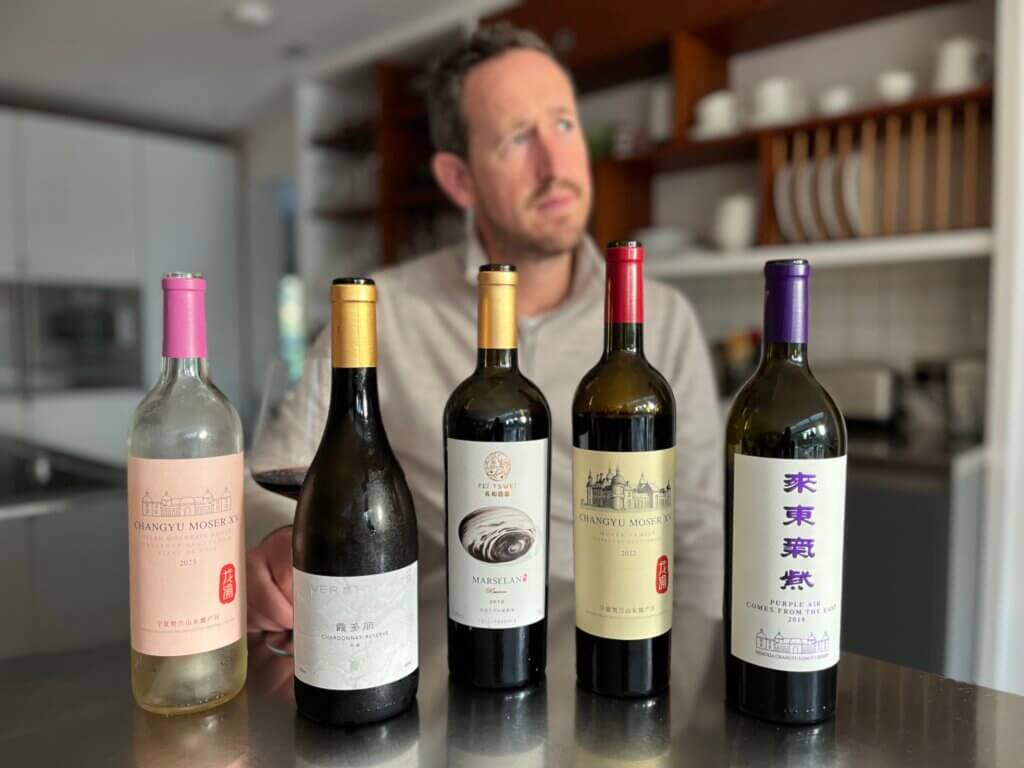
Answers to all this and more flow thick and fast in this intriguing episode, the result of Susie’s recent wine trip to China during which she sat down to record with expert insiders Li Demei and Natalie Wang.
We also taste several Chinese wines and deliver our verdict on where the country’s wines are right now.
Ultimately, we ask: is this an inflection point for Chinese wine?
Along the way we discuss things as varied as burying vines, baijiu, karaoke, geopolitical hot potatoes, Marselan, heavy bottles, ‘half-juice’, poetry, pandas, pigswill, pricing and horses on travellators…
Starring
- Professor Li Demei, Beijing University of Agriculture
- Natalie Wang, Vino Joy News
- Susie and Peter
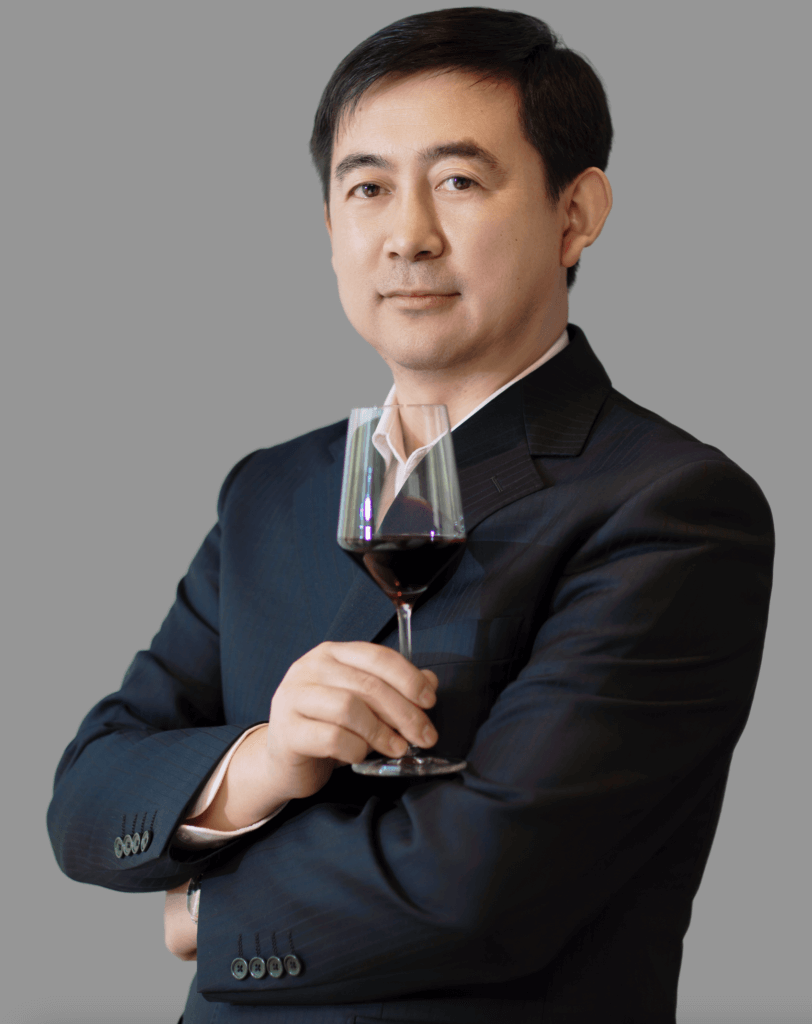
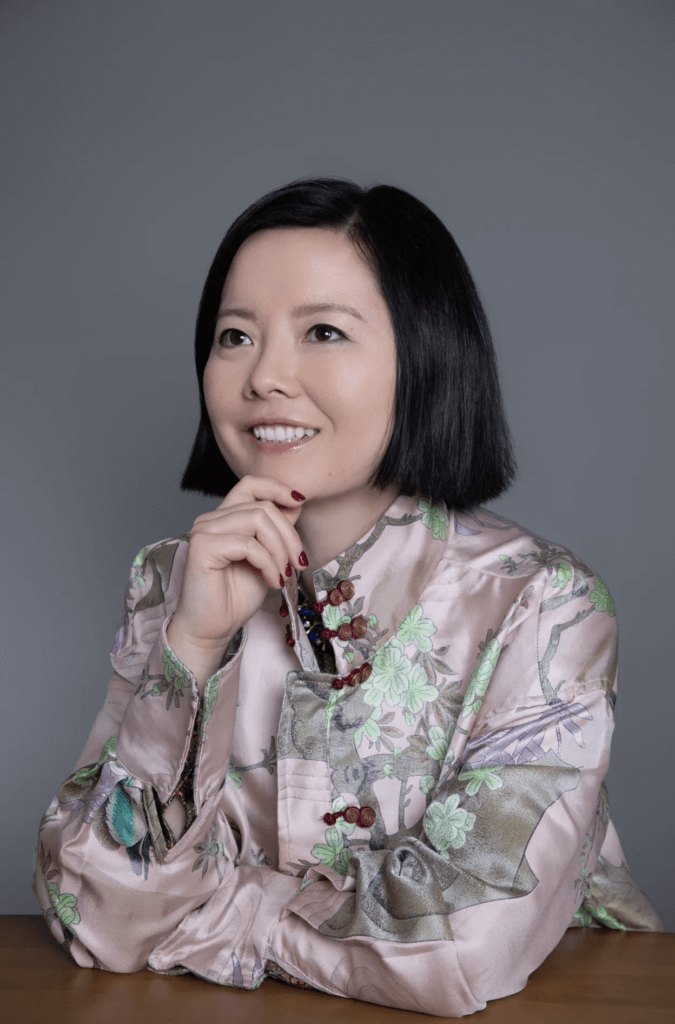
Links
- In this episode, we cite Janet Z Wang’s intriguing book The Chinese Wine Renaissance (2019, Ebury Press)
- For the latest on Chinese wines and China’s wine market, check out Natalie’s website Vino Joy News
- You can find our podcast on all major audio players: Apple Podcasts, Spotify, Google, Amazon and beyond. If you’re on a mobile, the button below will redirect you automatically to this episode on an audio platform on your device. (If you’re on a PC or desktop, it will just return you to this page – in which case, get your phone out! Or find one of the above platforms on your browser.)
Wines
We tasted the following wines in Winchester in October 2024.
What’s more, you can find the best wines from Susie’s judging in China here: Medal Results from IWSC 2024 Judging in China
Links below take you to Wine Searcher for international availability. We also provide UK availability and prices that we’ve been able to find.
- Changyu Moser XV Cabernet Sauvignon Blanc de Noir 2023, Ningxia, 14.5% (£18.50, VINVM)
- Silver Heights Chardonnay Reserve 2021, Ningxia, 12.5% (£42, Wines of China)
- Fei Tswei Marselan Reserve 2019, Ningxia, 15.5% (£43, Wines of China)
- Changyu Moser XV Moser Family Cabernet Sauvignon 2022, Ningxia, 15% (£75.95, VINVM)
- Changyu Moser XV Purple Air Comes from the Earth 2019, Ningxia, 15% (£200, Harvey Nichols)
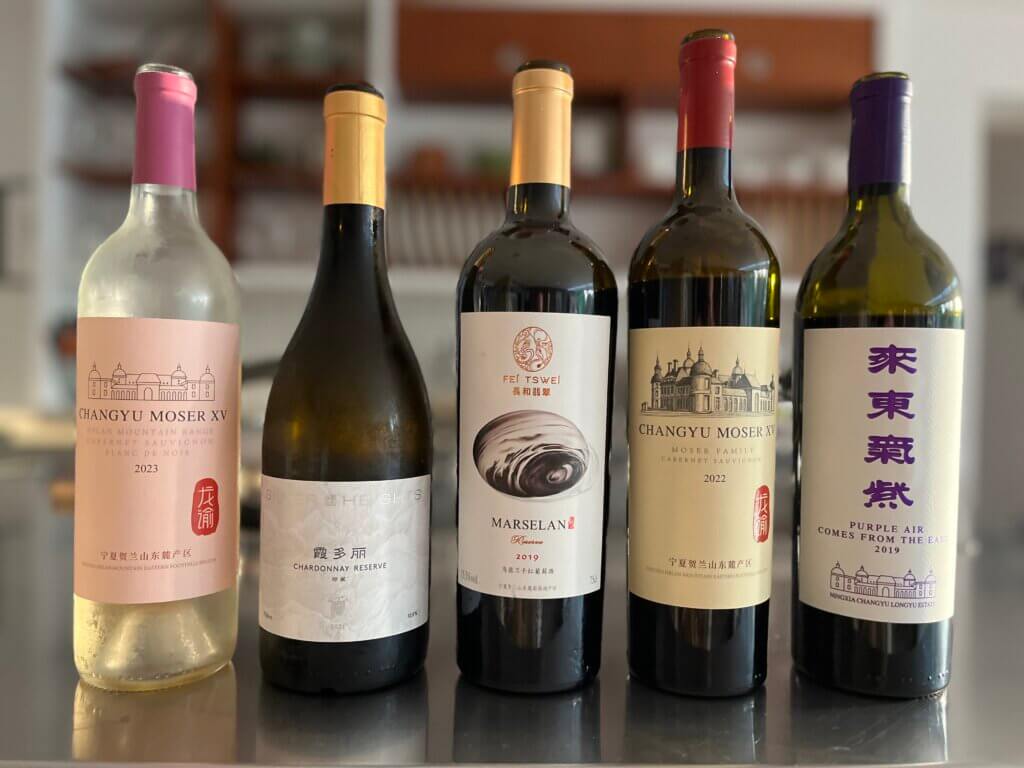
Images
Here are some photos of Susie’s trip to Xinjiang in August 2024.
There’s also a short video taken from our Instagram reel.
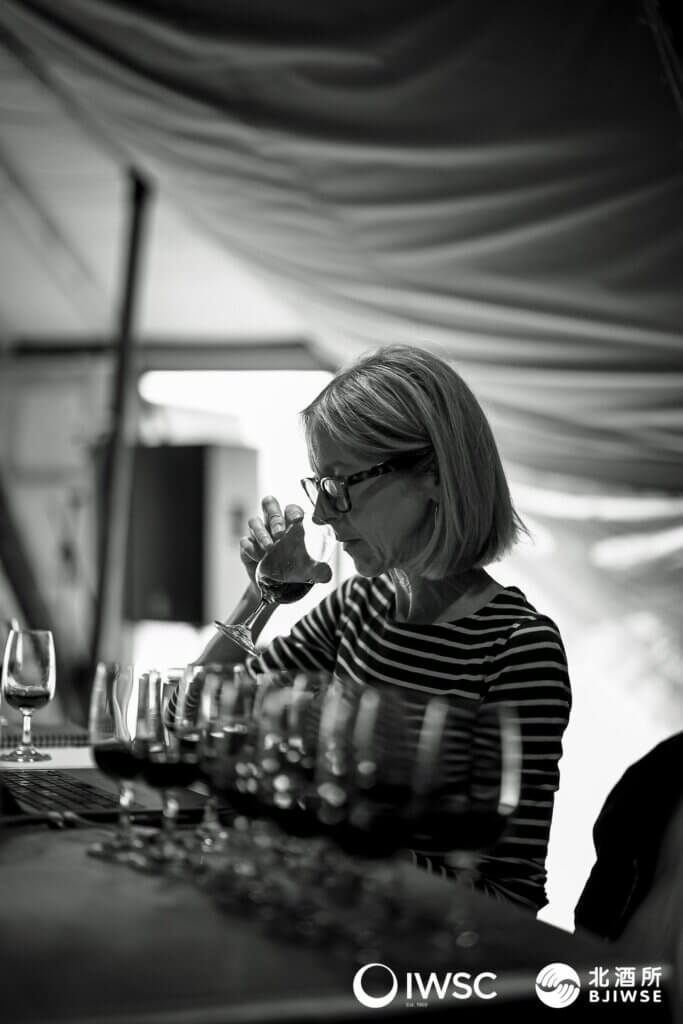
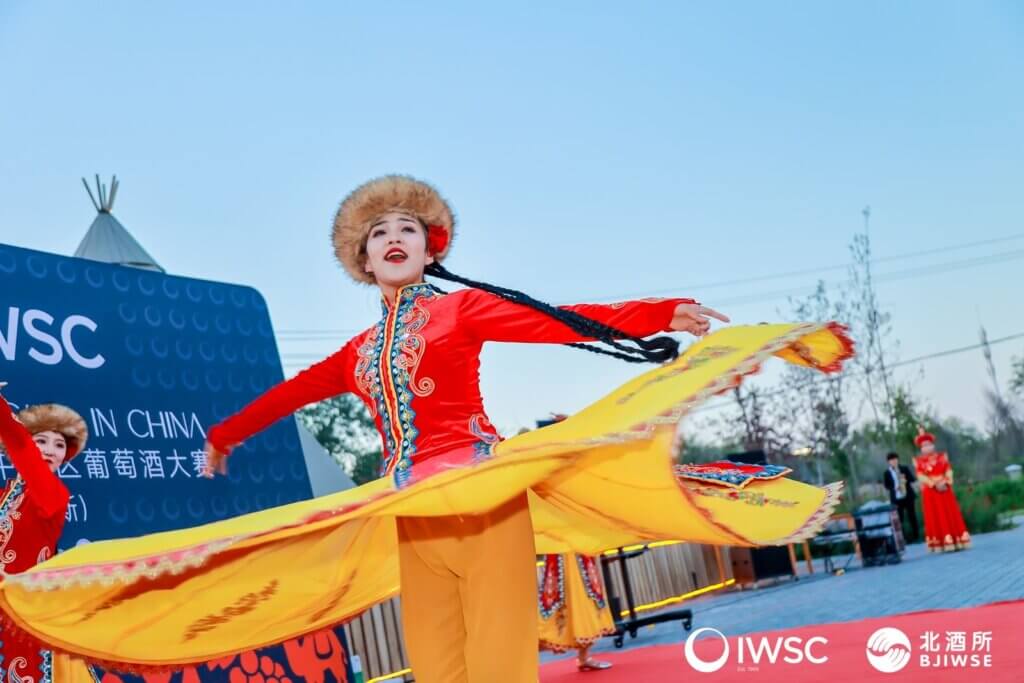
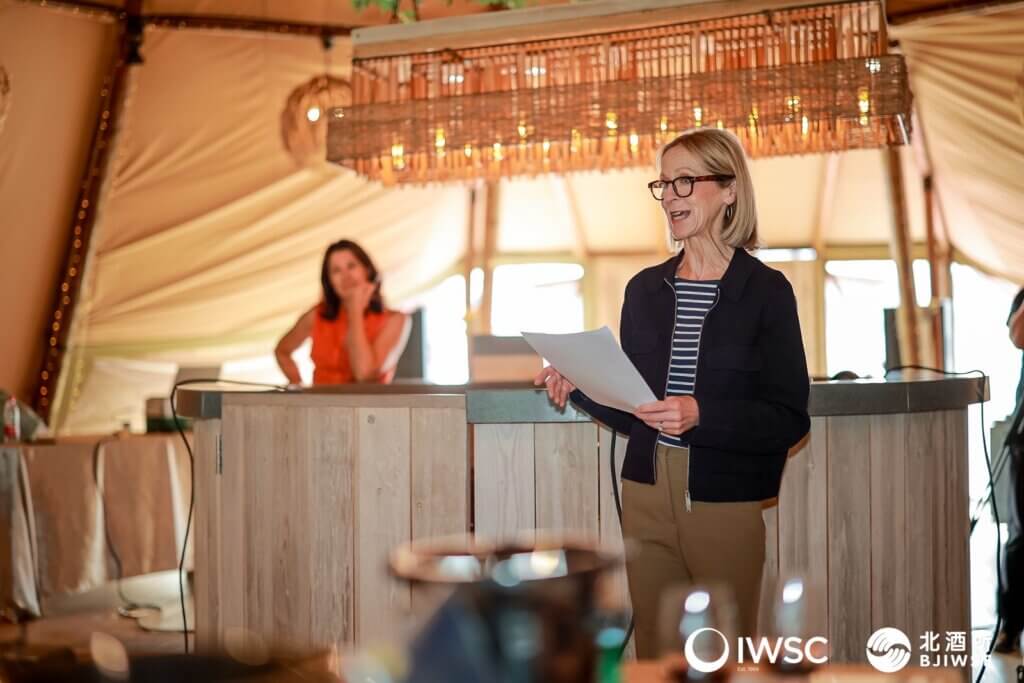
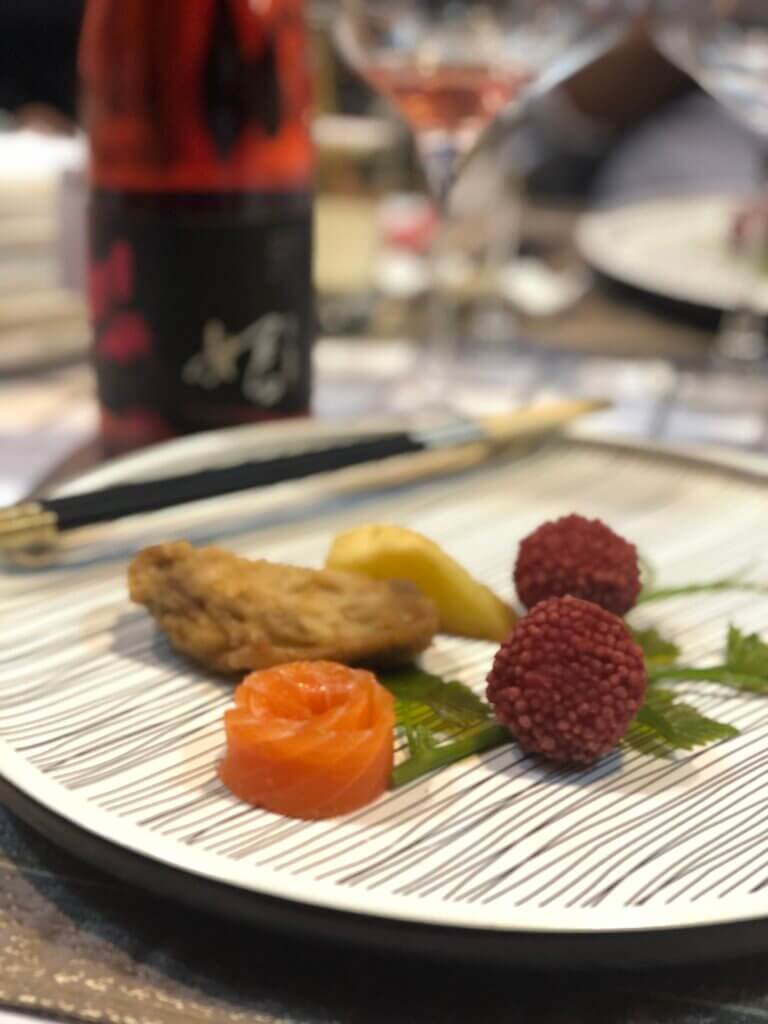
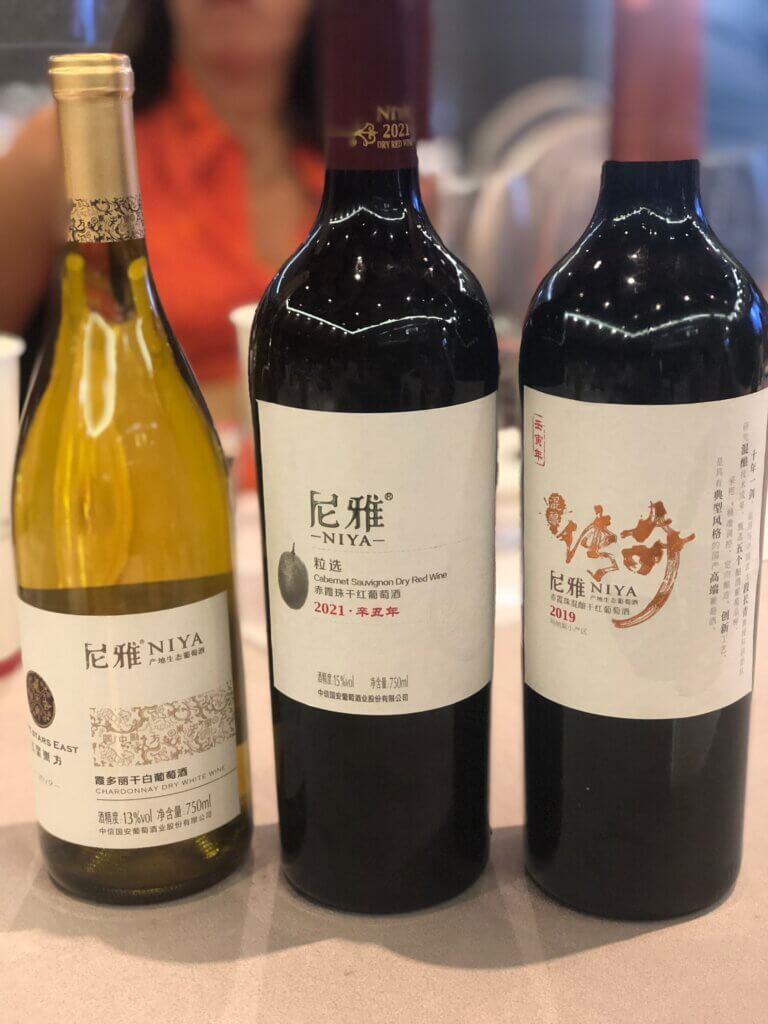
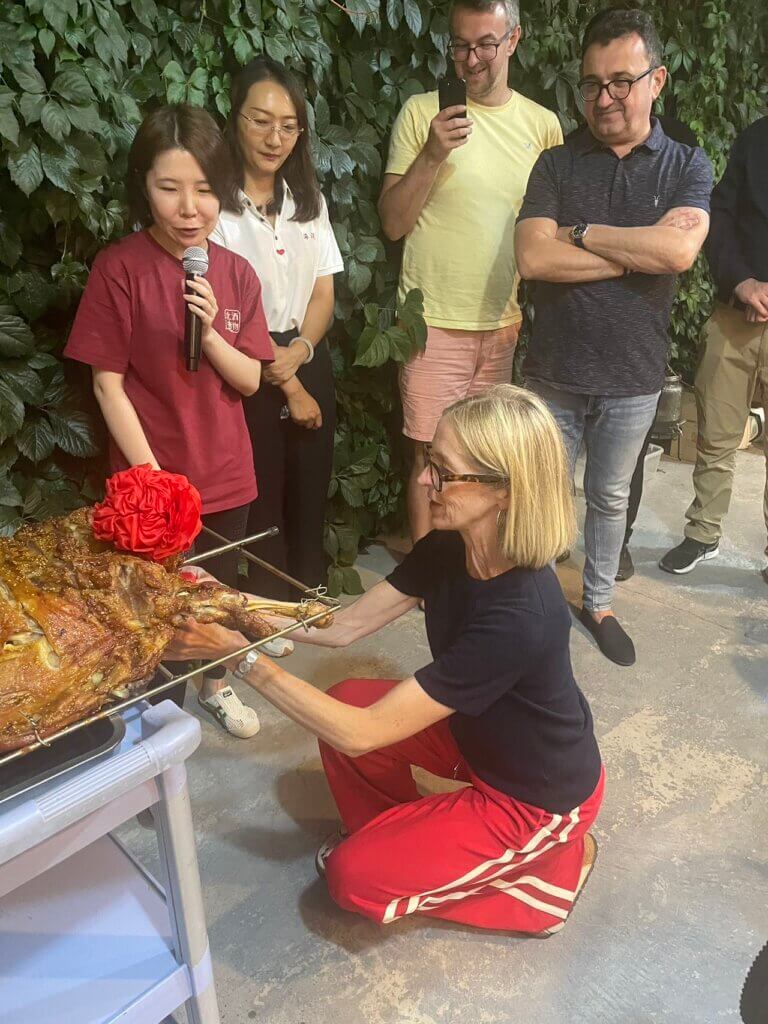
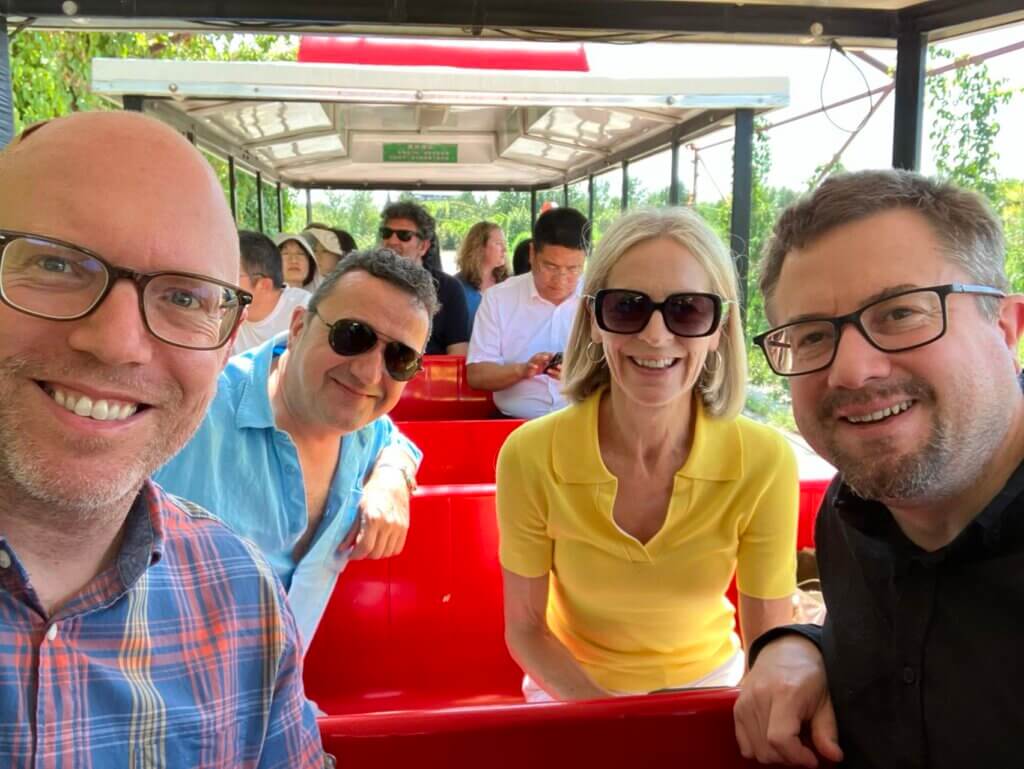
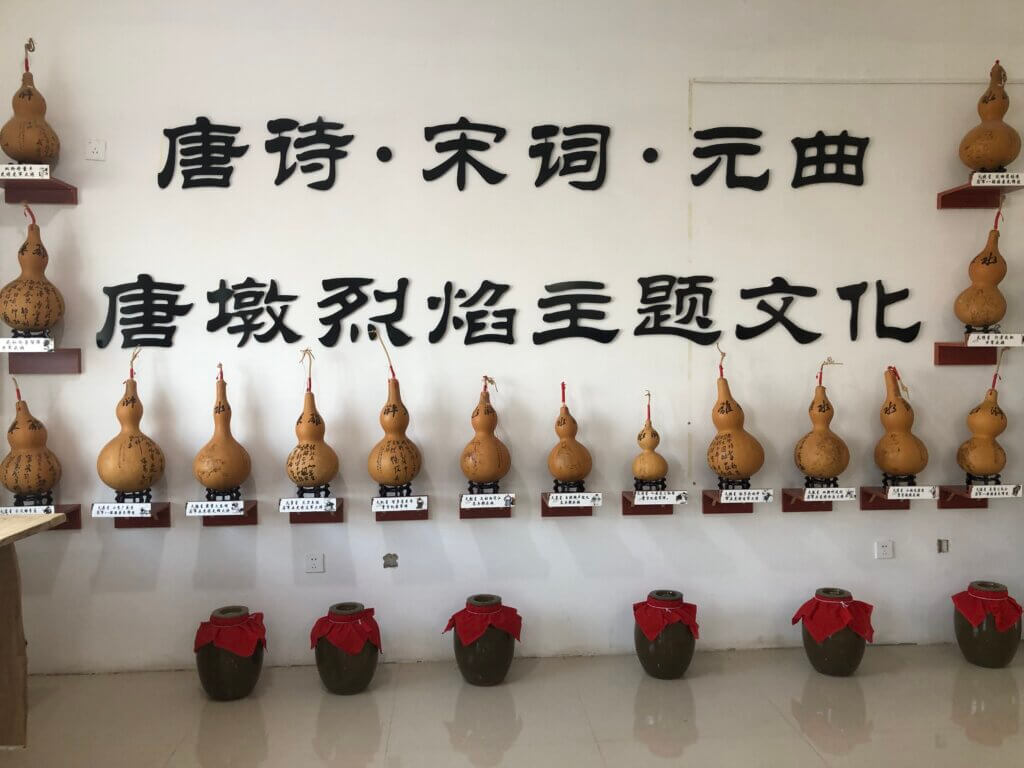
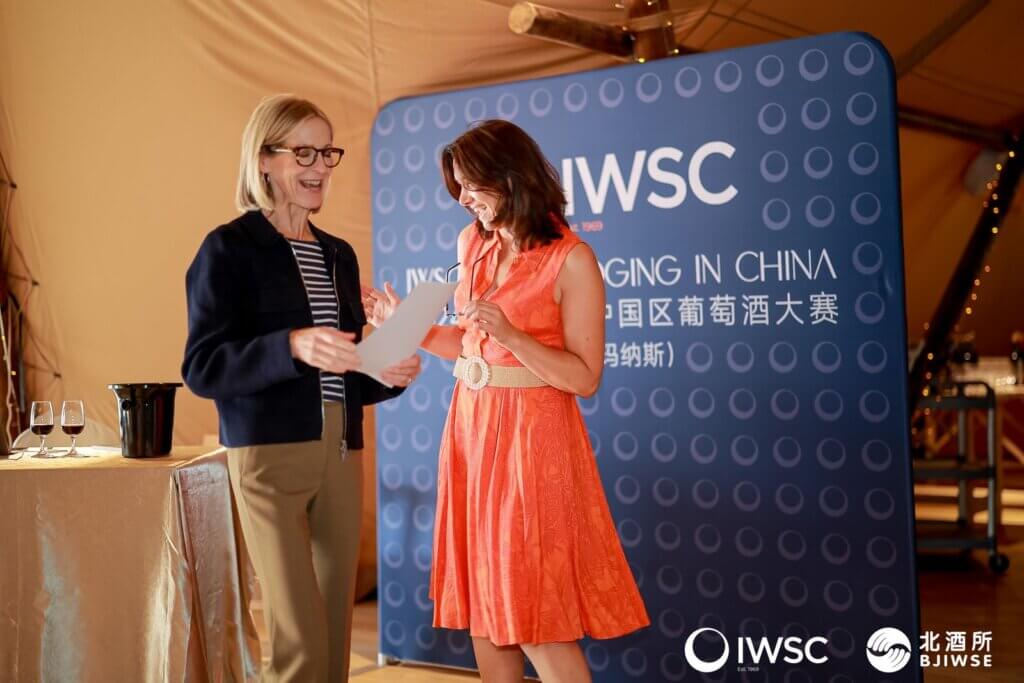

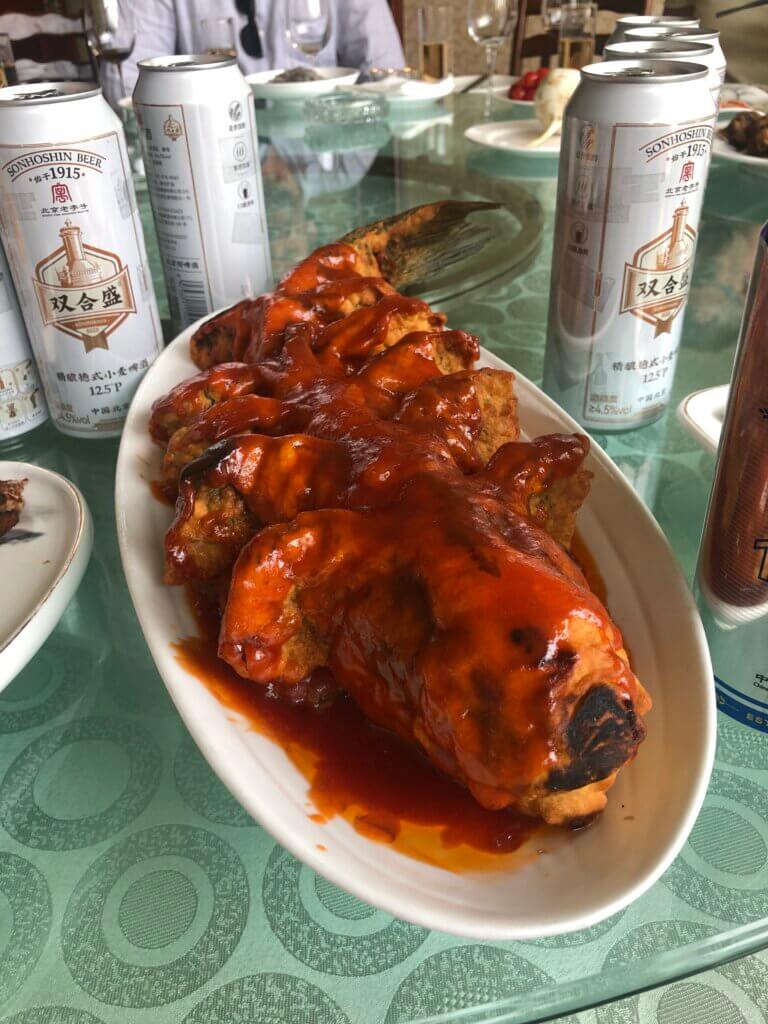
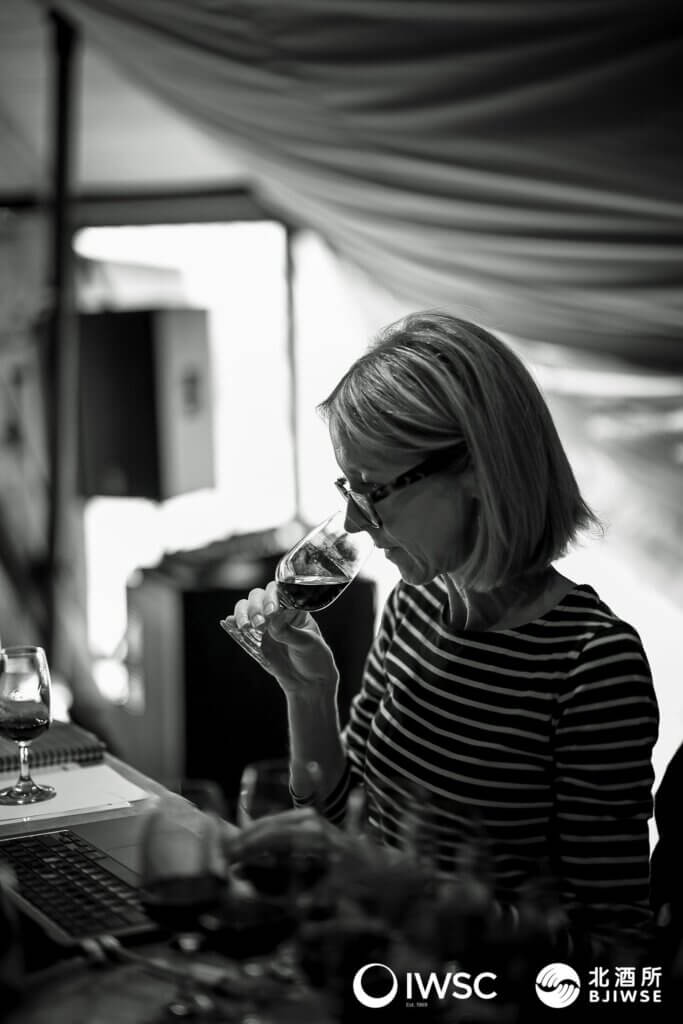
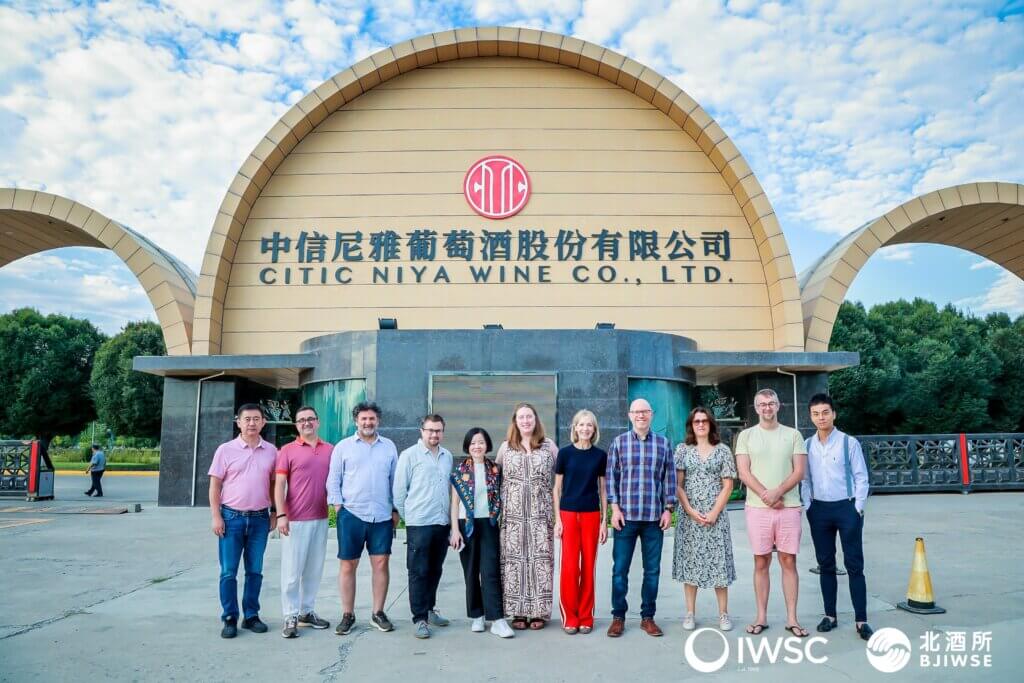
Get in Touch!
We love to hear from you.
You can send us an email. Or find us on social media (links on the footer below).
Or, better still, leave us a voice message via the magic of SpeakPipe:
Transcript
This transcript was AI generated. It’s not perfect.
Peter: Hello and welcome to Wine Blast! Or should that be Ni Hao and Ganbei? Because in this episode, we are talking Chinese wine and I would like to set the tone right from the outset with some poetry: ‘Drink a cup of wine, the road ahead is long.’
Susie: Are you just softening us up for the longest podcast episode ever?! I mean, I do actually have plenty of wine in front of me, so I can just drink through this. but we can’t expect everyone to do the same.
Peter: No, no. Okay, fine. I’ve been rumbled. Foiled! No, that’s not where I was going with this. that was a quote from, the 8th century poet and wine lover Li Bai, as cited in Janet Wang’s fascinating book, The Chinese Wine Renaissance. And I just wanted to, you know, to kick off with some culture and, a bit of history, because, you know, that’s the kind of thing we’re going to be getting into in this programme.
Susie: Culture and history, right up your street. Yeah, but let’s not forget we’re also talking about some exciting stuff that’s happening right now and, looking to the future too. Here is a taster of what’s coming up.
Natalie Wang: The Chinese wine quality has been improving and the perception of Chinese wine no longer being this kind of pigswill In the past 10 years, I think things have changed so drastically. It’s like, you know, Napa in the maybe 80s and 90s. I’m quite confident and hopeful about the future of Chinese wine
Demei Li: We need something new, something different. That’s, I think, the future for the Chinese wine industry. We must make something new to the world to attract the people, pay attention to the Chinese wine If we just make a Bordeaux, it’s not necessary to find a Chinese Bordeaux. You just go to Bordeaux to buy a wine…
Peter: Natalie Wang of Vino Joy News and Professor Li Demei of Beijing University of Agriculture there, who will be hearing more from in due course. We’ll also be tasting some Chinese wine and what’s more, you will be regaling us with stories, won’t you? Because you’re just back from China where you were, chairing a big old wine tasting, weren’t you?
Susie: Indeed, I was, I was in Xinjiang with the IWSC, the international wine and spirit competition, where I was chairing a crack team of judges, including Li Demei and Natalie Wang. And we tasted and rated about 260 wines from all over China. And then we also visited some local wineries too, too. So it was an intriguing insight into Chinese culture and wine
Peter: Okay, can’t wait to get stuck into all of that. But before we hear about your exploits, about impromptu karaoke and horses on travelators. Sorry, I couldn’t help that. I couldn’t help that. You’re gonna have to explain that later on. It’s gonna be fun to look forward to, though. what I was gonna say was we should kind of set the scene for our stories, you know, your stories, whatever the context.
Susie: Right? Yeah, absolutely. Some context. no travelators. China has a long history with pretty much most things, and wine is no exception. some of the earliest archaeological evidence of fermented drinks, including wine are from China. For example, at the Neolithic site of Jiahu in Henan, there’s evidence of grapes being used in a fermented drink. And we have Chinese written records from a millennium or two before Christ, referring to grapes.
Peter: But then, you know, there’s this sort of gr. Grapes. And grapes aren’t there. And wine And wine
Susie: If you kind of more poetry…
Peter: No, it’s not me being poetic. It’s me trying to, you know, I mean it. It’s important to be specific, isn’t it, about these things when it comes to China? Because, you know, there are many different kinds of grape species in China, for example, but historically, you know, they weren’t the vitis vinifera, which we normally associate with wine and which might, you know, kind of be thought of as the European wine making vines.
Susie: No, those vines probably came a bit later. it’s thought around the 4th century BCE perhaps along silk Road and first introduced in the northwest in Xinjiang. And then there was another wave of vinifera imports in the late 19th century into Shandong.
Peter: Yeah, and when it comes to wine and booze, there are different kinds as well, aren’t there?
Susie: Exactly. China and Chinese. Yeah. So jiu or J-I-U is the Chinese word for booze, essentially.
Peter: Right.
Susie: Then you’ve got baijiu, the grain based spirit, which is huge in China and the world’s biggest selling spirit by far.
Peter: Pretty, pretty fiery stuff from what I hear.
Susie: I can definitely agree with that. Confirm. and then there’s Huang-jiu, which is yellow wine or rice wine like sake. And then Putaozhu or Hongzhou is grape wine Now, grape wine does have a long and celebrated history in China. Chinese rulers and poets have championed it, as you’ve pointed out, but it never really, really evolved as a widespread drink of the people. Unlike in Europe, it was more beer and baiju and rice wine
Peter: Could that be to do with the geography and Climate?
Susie: Yeah, I mean, China is vast, so you can find
00:05:00
Susie: all kinds of different natural conditions. But for example, the interior of the country has a very continental climate, meaning hot summers and bitterly cold and dry winters. The indigenous local grape species, Vitis amurensis can survive pretty well, but it’s just too brutal for Vitis vinifera, which is, as we’ve said, the European wine vine. You know, the vines die, so for them to survive, they have to be buried in the winter, which is a lot of work. You know, equally in more coastal territory, it’s not so cold in winter, but you often get Manseng rains, hence the grapes rot. So this isn’t the easiest territory for classic winemaking vines.
Peter: It sounds pretty challenging, to be honest. I mean, you know, but maybe things are moving on now.
Susie: Yeah, I mean, yeah. So China had a pretty turbulent 20th century, but it opened up to the world in the 1980s and 90s in terms of wine Foreign companies started to invest and local and state firms really began to develop the wine sector. The government backed wine for its health benefits and as an alternative to alcoholic drinks made from cereals, which of course used up valuable food resources. There were still some pretty dodgy wines, so called half juice wines, you know, blended with juice sugar and flavourings. And, mass market Chinese wine has often been blended with foreign bulk stuff. But it was the start of China’s modern wine journey.
Peter: So, where are we now in terms of that journey?
Susie: Well, According to the OIV, China has the world’s third biggest vineyard with 756,000 hectares. And that’s compared to 945,000 for Spain and 792,000 for France. But most of that, maybe up to 90% of it, is for grapes and raisins, not wine Which is why China is only ranked 15th in terms of global wine production, ahead of Austria and Hungary, but behind Brazil and New Zealand. To be honest, I think we should say getting hold of reliable data from China isn’t the easiest, but it’s really interesting.
Peter: M. It has such a big vineyard, so that, you know, there is potential.
Susie: Yeah, yeah, yeah, yeah. And while while their wine production isn’t the biggest currently, it has the potential to grow. Yeah, yeah. I mean, China’s per capita wine consumption is still very low, you know, somewhere between one and two bottles per person per year. That said, both production and consumption has declined recently. But as I say, it’s hard to trust the data entirely. And it does seem like Chinese producers are shifting from quantity to quality and to engaging an increasingly informed Consumer. And that’s really interesting for the future.
Peter: Yeah, it does sound interesting. I mean, and what about sort of names to look out for in Chinese Wine?
Susie: I think we’ll, we’ll come on to that. but I think if we maybe talk about the regions first. you know, when I visited, I was in Xinjiang. now this is in the northwest, up towards Russia, Kazakhstan and Mongolia. It’s one of the biggest wine producing areas in China. Very dry and warm, but with brutal winters. But one of the big names in terms of regions at the moment is Ningxia, which is in central northern China, where exciting things are definitely happening. And there’s a lot of government support for wine there. And then you’ve got Shandong on the east coast, south of Beijing, where the modern Chinese wine renaissance really began over 100 years ago now. And then there’s Hebei, Shanxi and also Yunnan in the south, which is starting to make waves too. But I would say those are just the main ones, really.
Peter: So isn’t, Xinjiang where there’s been a lot of human rights controversy, over the persecution of the local Uyghur, Muslim, population?
Susie: Yeah, absolutely. And so we actually, we raised these concerns before we visited and we received assurances that the, the wine sector was very separate to all of that. But it is an issue, one of many geopolitical hot potatoes, you might say right now when it comes to China, that you can throw in Taiwan, Hong Kong, Ukraine, trade restrictions.
Peter: Yeah, maybe we shouldn’t in politics, maybe not for another show. But, but, you know, how did you find Xinjiang, from a general point of view?
Susie: Well, for the, I mean, for the judging, we were in a fairly remote area, quite a distance even from the regional capital, Urumqi, and things were pretty basic. And the food was very different. A bit of a culture shock there. And, for example, it was rare to have wine served with our meals, you know, which, which was a bit strange. But the people were lovely and hospitable. the landscape was vast and quite stunning. When you had the backdrop of the Tianshan Mountains, the wines, they were hit and miss, to be fair, you know, but the good ones, they certainly showed potential.
Peter: Okay, we’re going to come back to the wines, aren’t we? But, also also some karaoke,
00:10:00
Peter: I think. Just, I’m just to let you know you’re not off. Not off the hooks, I can tell. Why don’t we, why don’t we bring in our.
Susie: Good idea. Good idea. So while I was out in Xinjiang, I sat down with two people to get their expert insider steers on Chinese wine First up, Professor Li Demei, Director of enology at Beijing University of Agriculture. Li Demei is one of the country’s most experienced and respected consultant winemakers and wine educators. it’s hard to overstate his influence on the Chinese wine scene. I began by asking him to give us some context by explaining which regions are the most promising in terms m of Chinese wine
Demei Li: I think for me the most important wine region in China first, I would say Xinjiang. in terms of the history because of the vitis vinifera introduced to China. First place is in Xinjiang. So historically Xinjiang is important for the grip growing. And Xinjiang, secondly, Xinjiang very large. So Xinjiang the largest vineyard in China. So there are so many wineries, they produce a huge amount of wine every year. So that’s historically and also from the scale I would say Xinjiang is the most important. But recently, since last 10 years, I think probably you heard Ningxia, another province just in the middle of China. Ningxia is very famous for the wine producing because the local government push a lot, devote a lot on the, to push the wine industry. Yeah, that’s the two most important wine regions so far.
Susie: What are the biggest challenges in terms of making wine in China?
Demei Li: the biggest challenge is in the wintertime. Vitt vinnifera is, you know, it developed in Europe. So we all call the Mediterranean climate issue for vital minifera. But here in China we have the continental climate. So that’s something totally different. So we found in north northwest China it’s good including Ningxia and Xinjiang. So it’s good for green weighted vinifera because the summertime is dry. But the winter time in this region, these regions quite cold, extremely cold, minus 25, even lower. So the witchy wind plants will be killed by the extremely cold. So we must to protect it during the wintertime, we develop, processing. It buries the whole plants under soil in the winter. So that’s the big challenge for Chinese to green which is vinifera, to make wine You know, in the late autumn you, after pruning you bury the plant, and next spring before the bird soaked and then take it out. It cost one third of the total cost in the vineyard. So that something quite expensive. So and also you manage your vineyard. Everything, every technique must adapt to, you know, your plant adapt for burying and you know, you can’t just leave it like in Europe in Bordeaux so I mentioned it’s cold because, you know, we bury the plants because it’s cold in the winter, the same time it’s very dry. So that too in fact, it cold and dryness of the air. So keep the plant under the soil. You can also keep the moisture in the soil and leave the plants the branch, you know, keep some moisture.
Susie: So yeah, when you say just going back to the cost of doing this because it’s time consuming, therefore costly, third of the cost of the vineyard, does that mean it’s quite hard to make wine at a competitive price?
Demei Li: yes, you can see that, if you, after a few days visit, you talk with the producer, ask how you know how much they sell, their retail price, compare it, you find, you know, the similar, you know, wine in your home, you’ll find it’s quite expensive. So that’s one thing, another, for the price of the wine we say the Chinese wine is more expensive because it costs more. But on another thing, another reason, because most of the project is quite new, their marketing system developed, very well, not perfect yet. So that’s also probably the
00:15:00
Demei Li: marketing strategy not very precise and the managing not perfectly. So a lot of things to develop.
Susie: So would you say that the Chinese industry is a, producing country? I mean you are the 15th biggest producer in the world. World. But it’s still quite young and still needs to develop its strategy in terms of everything, in terms of the winemaking, in terms of the marketing. Is that all still in development?
Demei Li: yes, it’s all in development. So, many things, you know, we.
Susie: Must do develop Now a lot of the wine Talking of development, a lot of the wine seems to be red. Do you, I mean as far as I understand, you know, pretty much 90% of the wine made and the wine consumed in China is red. Is that going to change? Is it changing or is this still the norm?
Demei Li: Yeah, now, right now, no matter the imported wine are produced in China, the wine produced in China, majority part is the red wine And for the commercial reason, for the business reason, red wine you know, always you can put much more extra value compared with white wine You can easily find a much higher price for the red wine copper red wine So the businessman always thinking to get more. And then on the other side, Chinese like normally like red colour. So they like everything red. So that’s the white. for a business dinner or for the ceremony, the family ceremony, you need something traditional. So the red, I Don’t think every Chinese consumer like the taste of the preferred taste of red than the wine But they like, you know, the fashion of red changing now since last I think two, three years, people always talking the white wine developing themselves, especially from the coastal area because that area if people eat a lot of seafood and ah, the people now find, okay, when we eat, we drink, the two things sometimes can get influenced, you know, each other. So now they pay much attention to the taste of the wine Then some of the consumer now also enjoy the white wine
Susie: That’s really interesting. Can we just go back a little bit to winemaking and grape varieties? So what do you see as the most promising grape varieties in China?
Demei Li: It’s Cabernet Sauvignon. So it’s like in the world, Cabernet Sauvignon is on top and then followed by Merlot, Cabernet Garnish which is the Garmin. And also then Marcelon. Marcelo is a new variety. I guess since last few days. You taste a lot, I’ve tasted a few. So that’s the top four, variety overall. And then Chardonnay should be count on the 5th.
Susie: And if you were to say what you’d like to see in the future as the most important, would it still be Cabernet or would you rather see one of the others take over?
Demei Li: I think we have enough Cabernet so far even in China. Or I easily could find very fine good Cabernet in the world from other region. But I think we need something new, something different that’s I think the future for the Chinese wine industry. We must make something new to the world to attract the people, pay attention to the Chinese wine If we just make a Bordeaux, it’s not necessary to find a Chinese Bordeaux. You just go to Bordeaux to buy wine So I think for this reason, I think maybe Marselan has a very good potential, because since last 20 years after Marselan introduced to China, it’s already planted to almost every wine region. And we find in each region they give a very good result. But it different from the region to this region to another region.
Susie: And why do you think it’s having a good result?
Demei Li: I think it has a reasonable, yield, a good quality. I mean for example in Xinjiang you have stronger, the body and the nose from the seaside you find floral, fluid, it’s different from region to region. That’s also the thing that’s important. And within the same region. If you green with the same similar, management compared with the Cabernet Sauvignon Maclo Syra, the Marselan is always, you know, you find interesting in the vineyard and the wine you made.
Susie: And, if you were to tell me, so you can’t really, if I said to you, what am I going to get if I buy a bottle of Chinese Marselan, what will it taste like? Is that possible to say?
Demei Li: Yeah, Marselan first visual. it’s very bright, brilliant. The colour
00:20:00
Demei Li: is purple. It’s always Cabernet Sauvignon. Sometimes, you know, you find it really very dense. But the Marcelo is in, bright purple and very fresh nudes. Fresh fruit. Sometimes you find mint and lychee. The white fruit is very, fresh. sometimes it’s floral from the, the coastal area you find the floral. And, in the mountains it’s very juicy, some kind of sweet. That’s also. The Chinese like it and not too tiny.
Susie: So it suits the Chinese taste.
Demei Li: Yes.
Susie: So how do you see the future, for Chinese wines?
Demei Li: You know, in China we have something different. Alcoholic drinks. We have baijiu, that’s quite strong in the market. So we have baijiu, we have beer, we have yellow, rice wine So then the, wine So the wine is among, all the four alcoholic drinking industry. wine is the smallest. I believe all the other three alcoholic drink consume the cereal, you know, compete with the food, you know, and for, 1 billion Chinese to get enough food. So the food supply is always the priority. And, secondly, where you green the vine, to making the wine that’s the plant, that’s the land. The soil can’t plant other agriculture, products. So it’s very poor. It’s desert, it’s very sandy and it’s not good for coin, for maize, for some other cereal. So as for this reason, I think, wine should be a, better future.
Susie: It’s got a good future. Demai, thank you so much.
Demei Li: thank you. My pleasure.
Peter: So that’s really interesting what, he’s saying there is that wine in China can almost fulfil a political, a strategic role. You know, it could be grown in places where cereals can’t. And cereal crops are important for food security. So for both those reasons, wine is kind of well placed to grow.
Susie: Yeah, yeah. And he also said actually that he’s definitely noticed the trend for young people to take much more interest in wine than previous generations and, you know, search out Chinese wine rather than imported wine So looking to the future. And given the general global trend to nationalism and isolationism at the moment, or on shoring, you’d say it’s likely that we’ll be seeing Chinese wine growing as an industry, not just in terms of volume, but also quality and diversity. and that’s something that will be supported not just by the authorities, but also a new generation of interested, more educated Chinese wine drinkers.
Peter: Yeah, I mean, interesting what you said about price, though. Chinese wine are not the cheapest out there, you know, partly because of the production costs from things like having to bury the vines in winter. I mean, you know, that’s mad, isn’t it? You know, it’s so brutally cold and dry, they have to shift tonnes of, earth on top of every vine or it will die.
Susie: Yeah, I mean, that’s extreme.
Peter: That’s hardcore, isn’t it?
Susie: Yeah, yeah. I mean, that doesn’t happen everywhere in China. You know, the coastal areas like Shandong are more temperate, but then the challenge there is monsoon rains and rot, so a different set of problems. And. But yeah, the main regions like Xinjiang, Ningxia, Hebei, all have to bury vines in the winter, which is expensive. You know, Demei was also explaining that means you have to bend the vine trunks down towards the earth rather than leave them vertical in order to bury them. And of course, that’s just not ideal. So you don’t tend to get many vines surviving into old age, which again.
Peter: Would be another cost, you know, to replant, and also might impact quality long term, you know, the old vines that other regions have. Interesting, you know. Yeah, but also, you know, as we were saying, saying, just adds to the price in the final tally, isn’t it? So the future for Chinese wine would seem to be in the more premium ends of the market, you know, focusing on the top stuff, because that’s where it kind of has to play. It can’t do the.
Susie: Yeah, interesting too, what he said about China needing to do its own thing, you know, make something unique and different. With the Marselan grape, a big contender, actually, for a point of difference, and we’re going to come back to that. But in the meantime, let’s take a breath.
ADVERT: Hey, Michael Moon here with Tiny Bar chats. Just want you all to know to cheque out our podcast. We have a lot of exciting guests and a lot of exciting conversation.
Susie: By way of brief recap, China has a long history with fermentation and booze, but its modern wine industry is still young and developing fast. Challenges like cold winters and
00:25:00
Susie: monsoon rains and high prices are, countered by the advantages of an increasingly interested, wealthy consumer base. China’s wine industry seems poised at an intriguing stage in its development.
Peter: So in a moment we are going to bring in our next guest. but before we do, it might just be good to catch up on the very latest on the Chinese wine market because there have been headwinds, haven’t there?
Susie: Absolutely, yeah. So in the noughties, the Chinese really got the wine bug. They started buying, buying Bordeaux like crazy and domestic consumption ramped up. But then the bottom fell out of the market from 2011 onwards. Plus in 2012, President Xi Jinping instigated a crackdown on government spending and corruption, which hit wine hard.
Peter: And then in 2020, the Chinese slapped heavy tariffs on Australian wine imports because of a wider diplomatic, row, which was devastating for the Aussie wine sector. that was lifted in 2024. But the Chinese have just announced punitive tarif on European brandy now too.
Susie: So, yeah, the heady days are definitely over, aren’t they? As I said earlier, this seems to be an era of isolationism rather than rampant globalisation. So within China, domestic production, imports and consumption are all down. But you do wonder if this isn’t actually a reset rather than a terminal decline as the Chinese wine sector matures and evolves into something leaner and more fit for purpose in the modern era. And let’s not forget that China is still the ninth largest global wine consumer with huge potential to grow.
Peter: Yeah, that’s fascinating stuff. Okay, so I think on that note, we should bring in our next interviewee. Natalie Wang is a highly regarded Hong Kong based Chinese wine journalist who recently launched her own platform, Vino Joy News, a fantastic source of information on the Chinese wine market. and you asked, Natalie, how the Chinese wine culture has evolved, evolved over the past 30 to 40 years.
Natalie Wang: Big changes. when I was young, growing up in China, in Chongqing in southwestern part of China, where pandas are from, I always tell people that, you know, drinking wine is not part of the culture. And when I was given a glass of wine I remember at my tender age of 10 years old, at, ah, family gatherings, oh my goodness, I just want to spit it out. It was terrible. It’s like pigswill for lack of better description. It was awful. We had to add Sprite to it just to make it more palatable, you know, to drink.
Susie: And this is Chinese wine
Natalie Wang: That’s Chinese wine I mean, I won’t mention name, but yes, that was the impression of Chinese wine growing up I was never inspired to drink Chinese wine because that was the quality I remember and. But luckily, in the past 10 years, I think things have changed so drastically. You have a generation of winemakers, you know, starting in Ningxia making really quality wines. Grace Vineyards, Silver Heights. And now we’re looking at so many aspiring winemakers, not just in Nin Sha Nin, Shandong in Yunnan now, making really interesting, exciting wines. Not just Bordeaux blends, but really like peculiar varieties in the Malbec, Tempranillo, Pinot Noir and Riesling. And someone actually made a, I was told someone even made a, Sapuravi as well in Xinjiang. So you have some really interesting and, quirky things coming up.
Susie: So what, what would you say is then most exciting about Chinese wine right now?
Natalie Wang: I think the most exciting part is really the consumption growth. Interestingly, in the past few years, we have seen this growth and surgeons of Chinese wine being consumed, preferred by local Chinese consumers, which is really encouraging. I think it’s in line with the fact that the Chinese wine quality has been improving and the perception of Chinese wine no longer being this kind of pig, swell to be really respectable, you know, decent quality, sort of terroir driven quality, even wines. I think it’s quite interesting. I think I see that growing trend as well.
Susie: And in terms of winemaking, where would you say China sits in the global picture than now, given, you know, if people are choosing it above unimported French wine or.
Natalie Wang: I think it’s sort of a neoclassic style. it’s not Old world, it’s definitely new world, but yeah, it’s sort of hot. Leaning towards new world. It’s like, you know, Napa in the maybe 80s and 90s when, just after the judgement, Paris, and they’re really sort of coming up and more confident, sort of the same. I see it the same way as, Chinese winemaking at this stage, at.
Susie: This stage, do you think it’s going to evolve? Sort of.
Natalie Wang: Certainly. The leading wine producers coming out of China right now, they’re so making really elegant, well crafted wines and they’re so conscious with the environment. Like right now we have like Silver Heights, which is biodynamic,
00:30:00
Natalie Wang: certified by Demeter. You have Poo Chang in Xinjiang, Yanxi as well, doing organic wines and certainly more producers coming out and just sort of in line with the international standards.
Susie: So can I just ask you a slightly awkward question? Probably, you know, the government’s involvement in Chinese wine and ownership. I’ve read, and it keeps being said that, you know, the government own all the land, then farmers lease the land from the government and. But the government also seem to own wineries. How much is the government involved in what happens and is it, is it different for big producers?
Natalie Wang: As far as I know, I think, yeah, you’re correct. I think government owns all the land and then producers are really leasing the land from the government. I think even for state owned wineries and or privately owned wineries, the same story. I remember even reading, actually from the Thirsty Dragon, that book written by Suzanne. It was really great. And then talked about Silver Heights, even Ning Xia back then they were getting recognition. But the government, you know, they want to earmark a plot of land for real estate, property, construction and then they literally have to fight with the government to get that land back to themselves. So it is, is a little bit challenging. But today I think more of the local governments recognise the potential wine not just as a sort of consumer product, it’s also a great way to boost local poverty. Because especially looking at ninja, even Xinjiang where we are right now, you see a lot of Muslim local populations, people actually living under poverty line or try to make a decent life working, in wine industry actually gives them that love lifeline to sort of, you know, have a better life. so I think that’s how the government is seeing it more and then sort of encouraging this industry on the whole in general in terms of government support. And you see a lot of support from Nin Xia in particular.
Susie: I have not. Yes, heard about that. And when it comes to drinking wine in China, who is doing the drinking? Is it the all the younger generation or the older generation? A bit of both. Who likes Wine?
Natalie Wang: Yeah, it’s a good question, you know, how much of the wine is being drunk? That’s another question. Really.
Susie: In general?
Natalie Wang: Yeah, in general. Because a lot of times in the past people buy wines as gifting. You know, they buy the wine to send it to the partners, family members, you know, how much of it has been drunk, we don’t know. but I think what has happened in right now, at least from what I can see is a lot of more young consumers actually come up and drink wine because what they’re used to is baijiu. Baijiu is really high alcohol. It’s not something you can drink, you know, on a daily basis. I think now more and more you see younger consumers coming out, even though the spending might not as be as high as, you know, the boomers or the older generation but they’re certainly, you know, exploring and be quite adventurous with the choices. So. Yeah.
Susie: And adventurous within Chinese wine or is it imported as well or more imported? What would they prefer?
Natalie Wang: I think adventurous on both sides. Definitely. They’re more open minded towards Chinese wine right now and then at the same time they’re quite adventurous with imported wine I’ll give you one instance. Older generations like they like even for gifting reason, they all buy Bordeaux pen folds, you know, for gifting because it looks good. There’s a certain price tag like they have to tick. So without giving you the price tag and you know, roughly okay, I know how much this is worth and you see the value of it. But now younger generation, they don’t want to drink that type of wine anymore. They don’t drink what they were told. It’s more about what they want to try nowadays. So I think that’s a big switch. sort of explains why the consumption decreased a little bit. But I think it’s part of the market where you are cultivating real wine drinkers rather than sort of wine gifters.
Susie: And is it becoming more therefore of an everyday beverage?
Natalie Wang: I think it’s, it’s heading in that direction but it will still take a lot of time. certainly not every day in wine beverage. I wish that’s the case. because if you look at China’s per capita consumption it’s like one litre, it’s really low. We have a long, long way to go.
Susie: And do, I mean I’ve noticed we don’t tend to be given wine with, with our meals. And is there not really a culture of drinking wine with food or does it happen in restaurants?
Natalie Wang: I think it’s just, you know, the culture is not there, the consumption habit is not there yet. They’re so used to drinking tea with their meal and wine is something okay maybe with family and friends, you know, going out to the restaurants when I entertaining some of my business partners and then that’s something they choose. But
00:35:00
Natalie Wang: yeah, hopefully we can change that.
Susie: And the move, is there a move from red Wine? I mean we, at the moment there’s a, there’s a big, you know, China is known for making and drinking red wine 90% pretty much. Is that going to change?
Natalie Wang: I think so. I think so. Right now just looking at the data and the consumption trends, definitely happening in that direction. For instance, instance, even looking at the imports data you see red wines, with the exception of Australian wines, all decreasing. but then luckily you see New Zealand and Germany growing really fast. Because Souvenir Blanc and Riesling are massively popular. Even just during lunchtime was chatting with Professor Li De Mei, you know, on JD.com China’s biggest retailing, e commerce retailing website. German Riesling is the top searched category like for all of wines. So that just goes out to say like the real consumers, you know, more and more consumers at least are looking at white wines.
Susie: That is interesting, isn’t it? And, and if you were speaking to someone who’d never drunk Chinese wine before, which I think in the UK there are probably a lot of people who have never drunk Chinese wine Is there a way of describing it?
Natalie Wang: It’s so hard to. How would you describe it? It’s so vast. You know, even just looking at China, it’s like the size of European. But it’s very hard to put in. You know, simply summarise. What would you describe as a, you know, European wine style? It’s, it’s.
Susie: You’re right. Yeah, yeah. Fair, fair, fair. And why don’t we see more Chinese wines outside of China?
Natalie Wang: I think a lot of the wines are not exported. I would say 95% of wines produced in China are drunk within the country, country. So really a tiny portion is exported. And also I think probably the price point, it’s not the cheapest wine on the planet. So when you reach a certain price point and then you have so many choices, I think especially consumers in the uk, you guys have spoiled with the choices. So really to convince them to try something, oh, a little bit new, a little bit exotic and really not sure how the quality is. It takes a lot of convincing work.
Susie: Do you think it’ll happen?
Natalie Wang: Oh, I think hopefully soon it will happen.
Susie: Okay, so final question. What do you see as the future for Chinese Wine?
Natalie Wang: I’m quite confident and hopeful about the future of Chinese wine like I said before, I think it’s going sort of on the same trajectory as Napa. Definitely we’ll see more Chinese consumers choosing and drinking Chinese wine chiefly because the quality of the wine has improved so much. and I will see a new more and more younger generation sort of you know, going into this industry and making wine you know, for completely driven for their passion. I think we are seeing more sort of aspiring yarn makers who studied in France, in Burgundy, in Australia, returning back to China and making like really interesting quirky wines. So I think a lot of reasons to be hopeful about the market. Even though the market at the moment is a Little bit tough. but, yeah, we’ll see.
Susie: Natalie, thank you so much.
Natalie Wang: Oh, it’s such a pleasure to be on the podcast. Thank you for having me.
Peter: The same trajectory as Napa. That’s, quite a bold prediction. I find that intriguing.
Susie: Yeah. But it kind of ties in with what Li Demei was saying. You know, there is a general feeling that Chinese wine is developing and evolving and it will have a lot of domestic consumers supporting it. You know, you’re talking over a billion potential consumers with what is currently a very low per capita consumption. So even if exports aren’t huge because of the price or whatever, the likelihood is that Chinese wine is going to be a major player in the future.
Peter: Yeah, because baijiu is huge, isn’t it?
Susie: Absolutely. Oh, my goodness. Yeah. So the Economist was reporting on this and writing how the biggest baiju producer, Kweichow Mu Thai, is worth $313 billion. That is more than Coca Cola, way bigger than Diageo, the biggest Western distiller. You know, the market capitalization of big Baizhu exceeds half a trillion dollars. So that gives you a sense of the potential on the drinks front here.
Peter: Yeah. So I think it’s sort of interesting to try to get our heads around what exactly this will mean in terms of the wines themselves. You know, what is the Chinese wine of the future that you refer to? You know, is it going to be big, hearty, Bordeaux style blends, which is pretty much what’s been the norm until now? or is it going to be other things, like, I don’t know, Marselan like you say, or, you know, or what? Natalie mentioned Malbec, Tempranillo, Riesling, Saparavi or
00:40:00
Peter: white whites or fizz or orange. You know, what, what is, what is the future?
Susie: Well, we’ve got some wines here that might help us decide. no, but in general, I’d say it’s. It’s still too early to make a call on that one. And if you accept that China’s modern wine era realistically began in the 1990s, this is still such a young industry that’s just finding its feet, but they’re at a major crossroads. You know, the wild enthusiasm of the initial loving with wine has settled down. People in China are starting to get their heads around the reality of this thing, and it is intriguing and you.
Peter: Think sort of new and exciting things will emerge.
Susie: Yeah, yeah. I mean, you know, Natalie was talking about the Yunnan region, which is the. In the south, near Myanmar, on the edge of the Tibetan Plateau. It does have Some wine history from French missionaries. But when Australian wine legend Tony Jordan was packed off by his employer, the multinational group LVMH, owner of M Cheval Blanc, Dom Perignon, etc, you know, he was sent off to find the best place in China to make a top end wine After four years research, he chose Yunnan, which is high altitude and pretty inaccessible, but you don’t have to bury the vines or weather the monsoons. And that’s a place that’s looking promising. You know, Natalie described it as being like the Burgundy of China versus Ningxia being the Bordeaux.
Peter: Interesting, interesting. I did love her comment about Pigswell too. That was funny, wasn’t it? But, you know, so let’s banish that thought from our mind, I think.
Susie: So can we?
Peter: We have wines here to taste. They’re definitely not pig spilled. Should we get stuck in?
Susie: Oh, gosh, yes, I think we will. So I’ve got two whites from Helan in Ningxia. Now, first up is the Changyu Moser, Cabernet Sauvignon Blanc de Noir 2023. So a still white wine made from the red Cabernet Sauvignon grape. And you know what, it’s very drinkable. You know, it’s a bit different and there’s some blackcurrant fruit, but also pear apple. Quite rich in terms of flavour and te. I mean, surrounded probably more than rich, bit of spice there, but really good with food. And, you know, I would say not bad for £19.
Peter: Yeah, no, it’s pretty easy going, isn’t it? And something a bit different. White Cabernet Sauvignon, you know.
Susie: Yeah, yeah, yeah. Goes down very nicely. Then my second wine here we’ve got, something ostensibly more familiar, Chardonnay. Now this one’s from Silver Heights, a winery that Natalie mentioned, a biodynamic producer in Helen. And this is their Chardonnay Reserve 20, 21, 12.5% alcohol. It’s aged for eight months in French oak barrels. Now, you might think you’re on familiar territory with oaked Chardonnay, but actually this one is pretty funky, isn’t it? M And I quite like it for that, you know, it’s quite artisanal and characterful, I would say, rather than stereotypical. You’ve got some, some bruised apple. It’s quite mealy, spritzy, which is surprising, you know, it’s just a bit funky.
Peter: Yeah.
Susie: And quite ripe, but also fresh and just different.
Peter: Yeah. Which I guess what you want with a Chinese win, right? You want a bit Different. So, you know, talking, about points of difference, Li de May mentioned the Marselan grape variety and I’ve got one here, the Fei Tsui Marselan Reserve 2019 from Ningxia as well. what I liked about this one was that you get tonnes of complexity and sort of bang for your buck. There’s sort of lavish, sort of rich, ripe, dark fruit here. There’s dark chocolate, woody, almost sort of minty complexity. But then, you know, it finishes quite fresh and lifted with lovely sort of juicy acidity and a gentle bittersweet twang.
Susie: Yeah. And it’s not as tannic, is it, as Cabernet Sauvignon would be. And you know, it’s dense but also quite soft. You know, that sort of like winter casserole wine
Peter: Totally, totally. Although, you know, in a way that’s also what I criticise about it. You know, it’s a bit international. It kind of, it sort of ticks boxes without really showing any intrigue or defining characteristics. You know, I’d love to see Chinese Marselan showing us in the glass, ask why it’s unique and different, you know, Plus, I think this one, doesn’t it, it comes just looking at this bottle in a very, very heavy bottle, which is just not the way forward.
Susie: No, I totally agree.
Peter: Sustainability.
Susie: Totally agree. Especially on, on the, on the bottle front, you know, that’s exactly what, what I found when I was in Xinjiang. You know, we had so many heavy status symbol bottles and they just seem horribly out of step with forward thinking wine producers around the world, you know, who are moving towards light, lighter bottles, which mean a, lower carbon footprint.
Peter: But we were going to just explain a little bit or talk a little bit about Marselan itself.
Susie: Yeah, yeah, of course, yeah. So, so Marcel is interesting in China. And this variety is a cross of Cabernet Sauvignon with Grenache, originally developed in southern France, but which was taken up in China. And they’re seeing it as a, as a potential point of difference, you know, no other notable region around the world majors on Marselan.
Peter: Yeah.
Susie: And it seems to, to work well in China. As, Lea de May said, it can reflect terr and it suits the Chinese taste, you know, so it is one
00:45:00
Susie: to watch. But I think it would be great to see a bigger emphasis on elegance and freshness in more of the Marselan wines. Yeah.
Peter: yeah. Now, while Marselan may be promising as things stand, unless I’m much mistaken, it’s Cabernet Sauvignon that still dominates Chinese wine Production, you know, which is fair enough. It’s the widest planted wine grape in the world. It’s well known, the Chinese found in love with Bordeaux. you know, it’s all entirely understandable. The question is, is it right for China moving forwards?
Susie: Oh, the million yuan question. well, we’ve got two here. both from Changyu, Moser in Ning Sharp. First up is the Moser family Cabernet Sauvignon 2022, 15% alcohol. Now, this is an intriguing wine isn’t it? It’s almost hard to rate because it has this very leafy, green, woody Cabernet Sauvignon character. Bit like roasted pepp green beans, but then also this baked fruit, slightly oily texture and spicy, warming alcohol. So it’s almost like a sort of a mixture of underripe and overripe, but still quite varietal and with this quirky, interesting character. You know, it’s a bit rough around the edges, but it’s certainly not bland or international.
Peter: Yeah. And there’s a slight sort of bitterness on the finish, too, you know, which can work with food, but m. Equally, it can be a bit much by itself. So, you know, it is, as you say, it’s intriguing. and it is a bit different. And also next up, we’ve got Changyu Moser’s top bottling, which is purple Air comes from the East. And, that’s just not just me being poetic. Again, that is the name of the wine
Susie: It is actually written there, isn’t it, on the 2019.
Peter: So it’s a bit of. Bit of age. You know, this, again, has those same elements of kind of roasted pepper and warm earth, but it’s kind of dialled down here. and because the age is also softening into more tobacco, cedar and leather characteristics, which are really kind of nice. I love the tannin here. It’s very cultured, sort of elegantly drying. So the wine itself is big, but it’s stylish. Again, slightly bitter on the finish. Almost like, you know, that hint of stewed tea. When you stewed tea and you drink it, it’s kind of quite drying. But again, you know that. That can work with food.
Susie: Yeah. So two really interesting wines there. You know, the main issue for me, and I think both of us, frankly, is the price. it’s actually hard to find the correct price, and I’m going to say that right now, but I think I’m right in saying this. The first one that we had there was about £75, and then the purple air is nearer £170 a bottle. Now, this goes back to what Lida May and Natalie were saying. These wines are really expensive, you know, particularly on export markets, and that’s a barrier to people trying them.
Peter: Yeah, that’s a real shame, isn’t it? you know, and just. I’m actually looking back to the Chardonnay. The price for that is 42 pounds. The Master land is 43 pounds, you know, by the way, so, again, not. Not cheap wines. One other thought that I’d venture are, Bordeaux varieties like Cabernet Sauvignon. Really right for, you know, for what is in many places an extreme continental climate. You know, Bordeaux is a maritime climate. and as we’ve discussed, you know, the world already has lots of Cabernet and Merlot. What about varieties more suited to these kind of extreme conditions? Like, I don’t know, Malbec or Tanat or Alanic or Grenache or whatever. You know, all whites in along the same vein.
Susie: Yeah, I mean, it would be good to see other things emerging over time, definitely including more whites and as we say, an emphasis not just on bold, rich, international styles, but on elegance to our expression, diversity. You know, the best Chinese wines are worth trying, but to my mind, as a very general rule, they’re just not yet distinctive or refined enough to be worth the price. but watch this space, because there is quality and just as importantly, huge potential.
Peter: And I hear there was both quality and potential on show in your, impromptu, karaoke.
Susie: I was really hoping you’d forgotten about that. I should have known better. Okay, so, yes, yes, while we were there, yes, we did have one particular dinner involving various state officials. All quite grand. But then someone broke out that karaoke, and I felt I had to represent our proud nation or it would have been poor form is all I’m gonna say.
Peter: Of course you did. Of course. Notorious wallflower that you are. So what did you say?
Susie: Well, me, I’m pleased to say it wasn’t me alone. I was joined by a couple of members of the judge team. You wrote in. You wrote to bless them, and we sang, summer of 69. Of course, total classic.
Peter: Can’t go wrong. I think we actually have video evidence of this, which may have to go up on show notes alongside all the wine details and other links. But plus, what we can also post is a video of horses on travelators. Now, can you tell us a bit more about this one, too?
Susie: Oh, yeah. So, in addition to visiting local wine producers, we also went to see A, stage show in Xinjiang. And as far as I could tell, I’m not sure, but it seemed to involve a lot of heroic action. And yes, we had warriors riding
00:50:00
Susie: horses on travelators on the stage. Very impressive.
Peter: Okay, so, we’ll stick a load of intriguing videos and photos of your visit on the show notes and social media, so look out for those, any final words about China and its wines.
Susie: I think one of the biggest things that needs to change, and I speak from firsthand experience, is for the Chinese in general, general, to start seeing wine as something to be enjoyed with a meal, you know, both as an aperitif and to have with the food and not just as alcohol to be drunk afterwards. And then, as we’ve already said, you know, in terms of winemaking, there needs to be a move away from international style wines that are just copycats of others, you know, to wines that offer something unique and different. Maybe as we’ve said, using the likes of Marselan for the reds and Petit Manseng actually for the whites, which we haven’t really talked about, but which is a really promising white variety in China.
Peter: Okay, so there we have it. it may have been a longish road, but we drank our wine so all is well. by way of closing summary, China has one of the world’s biggest vineyards, and its wine scene is developing fast. For now, the wines remain a bit hit and miss. Also pricey, partly due to production costs, like having to bury vines in winter. Bordeaux grapes still dominate, and it’s not uncommon to find lots of oak extraction alcohol and heavy bottles. But the best wines are impressive, and the likelihood is that Chinese wine will be a major player in the future. The question is, will it be mostly drunk in China or will the rest of the world get to enjoy it too?
Susie: Thanks to our guests Li Demei and Natalie Wang Check out our, show notes for more details on susiandpeter.com if you’ve enjoyed this show, please do share the love rate, review and recommend. Until next time, cheers.
00:51:50
